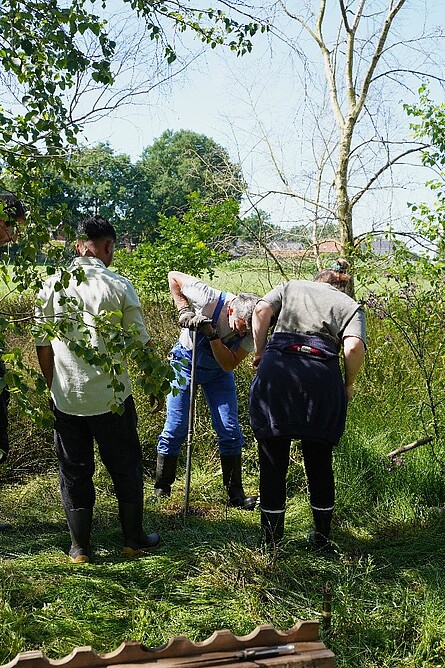The Mollberger Moorsenke in the focus of investigations into vegetation history

The natural monument Mollberger Moorsenke in Mollberg-Wiefelstede, Ammerland district, is most likely a pingo remnant. Pingos are formed in permafrost areas and are mounds that form when an ice core grows underground during glacial climatic conditions. After the end of these conditions, the ice melted and the pingos collapsed. That resulted in a water-filled depression (often with no outlet) surrrounded by a raised wall. After the lake had silted up a raised bog developed on the surface. These pingo remnants therefore represent unique archives of landscape history and its sediments can date back to c. 15.000 years ago to the time of the first late-glacial warming after the end of the last glaciation.
On June 30, as part of the Master's degree course in Environmental History at the University of Bremen, the NIhK and students extracted a 5 m long core of lake sediments and peat, which will now be sampled in detail and analysed for of pollen and plant macroremains as part of a Master's thesis. The aim of the analyses is to reconstruct the late- and post-Glacial vegetation and landscape history in the Oldenburg Geest region, , which is shaped by the climate and increasingly by the influence of human activity.

(Foto S. Wolters, NIhK)
